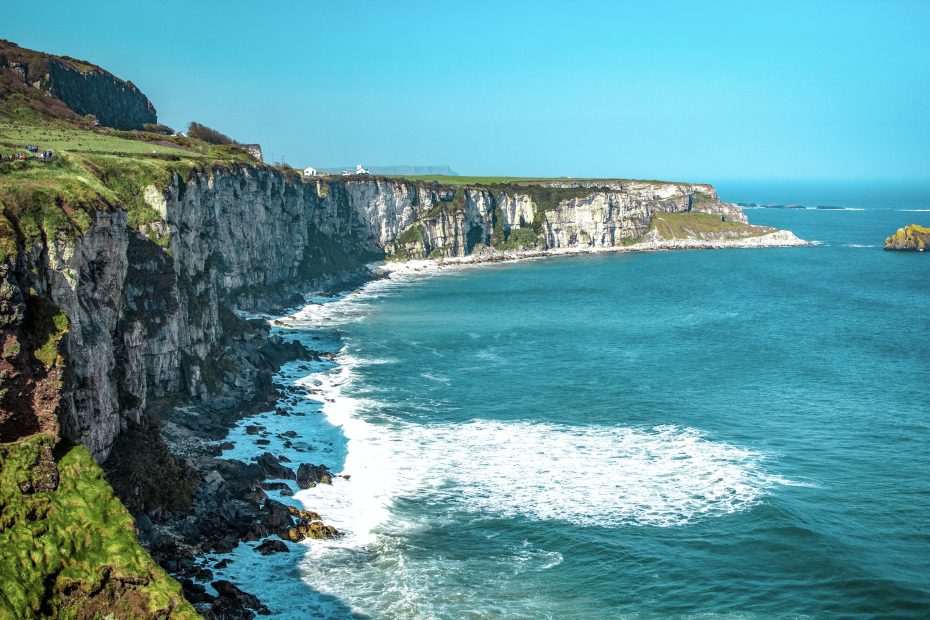Ireland is an enchanting island nation renowned for its dramatic landscapes, lively cities, and rich cultural heritage. From the lively pubs of Dublin to the rugged cliffs along the Wild Atlantic Way, Ireland offers countless opportunities to experience its charms. This guide covers some of the top destinations and attractions to visit while exploring the Emerald Isle.
Table of Contents
Dublin
As the capital and largest city of Ireland, Dublin is a must-see stop. Many of the city’s top sites are conveniently located within walking distance of each other. Don’t miss the grand Trinity College campus and the iconic Long Room of its Old Library, home to the ancient Book of Kells. The soaring vaults and ornate details of St. Patrick’s Cathedral provide a beautiful glimpse into Ireland’s religious history. For an overview of Dublin’s past, spend some time wandering the grounds of medieval Dublin Castle. And be sure to enjoy Dublin’s lively pub culture along with a pint of Guinness!
Cork
In Ireland’s south, the port city of Cork offers a more laidback, quintessentially Irish atmosphere. Stroll through the bountiful stalls of the English Market and don’t miss the chance to kiss the Blarney Stone at Blarney Castle just outside the city. Learn about Ireland’s history of crime and punishment at Cork City Gaol. And take in sweeping views of Cork from the towers of St. Anne’s Church. With its vibrant food scene, cobbled streets, and nearby coastal scenery, Cork provides the perfect base for exploring southern Ireland.
Galway
On Ireland’s west coast, the colorful city of Galway buzzes with youthful energy and charm. For sightseeing, the medieval Spanish Arch provides picturesque views over the River Corrib. Marvel at the soaring arches of Galway Cathedral and learn about local heritage at the Galway City Museum. But some of the best experiences are found by simply wandering Galway’s winding cobblestone lanes, ducking into its traditional pubs, and soaking up the vibrant street performers and culture.
Kerry
No trip to Ireland is complete without venturing into the dramatic landscapes of County Kerry. The remote Dingle Peninsula offers stunning coastal scenery dotted with ancient stone forts and encircled by quaint villages like Dingle Town. The famous Ring of Kerry provides a 110-mile route along Ireland’s southwest coast with jaw-dropping vistas around each turn. And within Killarney National Park, marvel at scenic highlights like the cascading Torc Waterfall and sweeping views from Ladies View.
Cliffs of Moher
Along Ireland’s Wild Atlantic Way, the iconic Cliffs of Moher stretch for 5 miles along the coast, towering 700 feet above the ocean below. Walk along the clifftops and soak up panoramas of the rugged cliffs, views out across the Atlantic, and even glimpses of the Aran Islands far offshore on clear days. Located in County Clare, the Cliffs of Moher are among Ireland’s most visited natural landmarks – and for good reason.
Giant’s Causeway
Up north, Northern Ireland is home to another of Ireland’s most famous natural attractions – the Giant’s Causeway. This coastal landscape features striking hexagonal rock columns formed by ancient volcanic activity, leading from the cliffs down into the sea. Take your time wandering over the mesmerizing formations and soaking up the dramatic seaside scenery. The myths and legends surrounding the causeway, like the fabled giant Finn McCool, add to its air of magic and mystique.
Belfast
As Northern Ireland’s capital, Belfast provides an exciting urban experience steeped in history. Check out the state-of-the-art Titanic Belfast museum to immerse yourself in the infamous ship’s tragic maiden voyage over a century ago. The somber cells of Crumlin Road Gaol offer an intimate look at the city’s past conflicts. And take a black taxi tour to see Belfast’s extensive political murals depicting The Troubles and divided neighborhoods. While reminders of the past still exist, today Belfast is a vibrant and forward-looking city.
Conclusion
From lively cities like Dublin and Belfast to scenic coastal gems like the Cliffs of Moher and Giant’s Causeway, Ireland delivers magic and wonder around every turn. Spend time soaking up culture in historic sites, exploring evocative natural landscapes, and mingling with friendly locals in cozy pubs. With its rich heritage and astounding beauty, it’s easy to see why Ireland remains such an unforgettable travel destination. The Emerald Isle has something amazing to offer any visitor.
Frequently Asked Questions
What is the best way to get around Ireland?
Having a rental car provides the most flexibility for exploring Ireland’s rugged rural regions and coastal sights. Otherwise, buses link most major towns and cities. Guided tour buses are also a convenient option.
What is the weather like in Ireland?
Thanks to the Gulf Stream, Ireland has a mild climate year-round despite its northern latitude. But rain showers are common due to the Atlantic location, so bring layers. Summer highs average around 65°F.
How long do you need to see Ireland’s top sights?
At a relaxed pace, you’ll want around 7-10 days to see top highlights like Dublin, the Ring of Kerry, and the Cliffs of Moher. For a comprehensive trip, plan on at least 2-3 weeks.
What are the best Irish souvenirs to bring home?
Iconic souvenirs include Irish wool sweaters, Waterford Crystal, Celtic jewelry, and Irish musical instruments like the bodhrán drum. Don’t forget to take home Irish whiskey too!
What is the best place to stay in Ireland?
Dublin offers the most hotel options as Ireland’s tourism hub. Otherwise, smaller cities and towns across Ireland have cozier B&B options. Staying in a rural castle or manor for a night is also a memorable experience.
